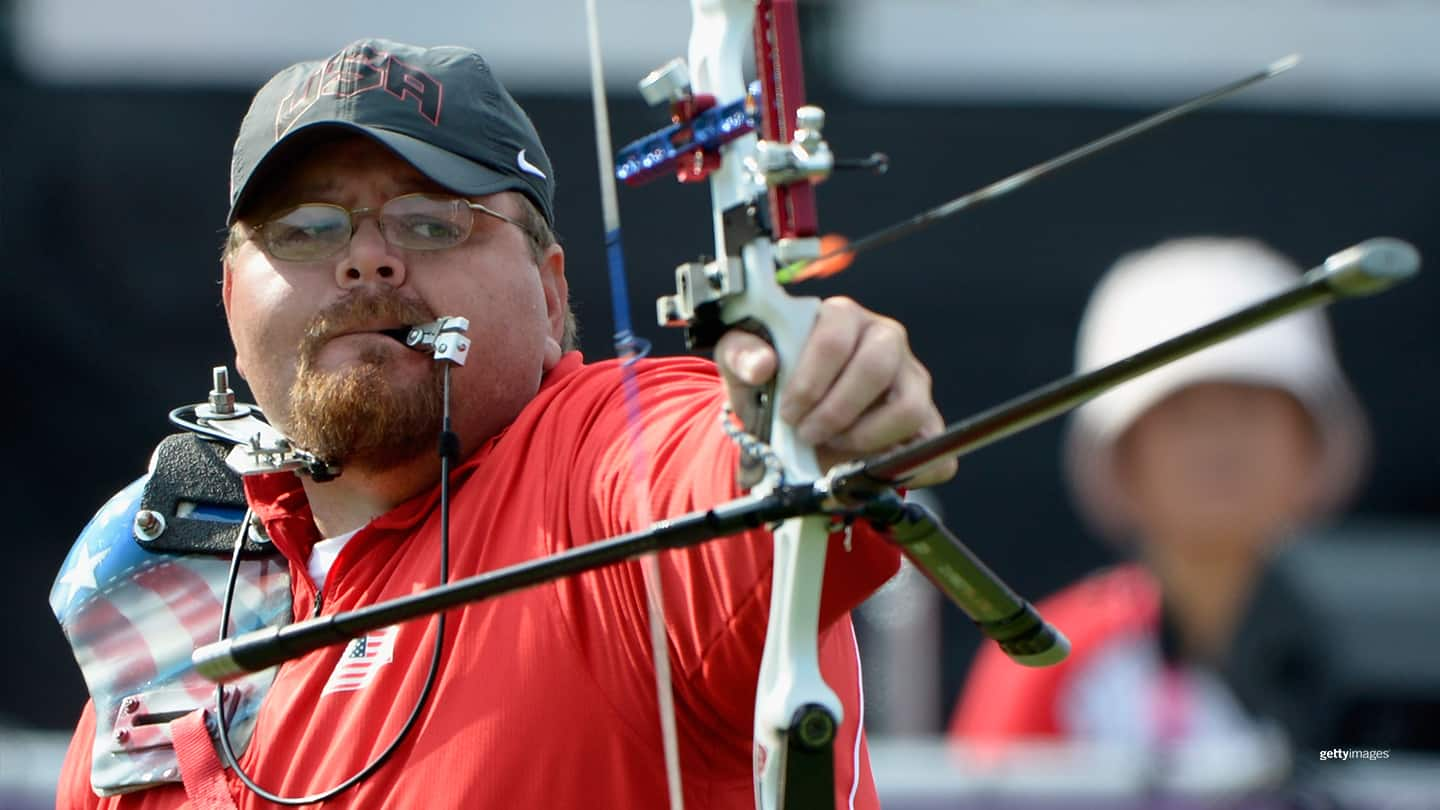
4 Things We Bet You Don't Know About Para Archery
by Lisa Costantini

When the Paralympic Games were first held in Rome in 1960, archery was on the program. Since that time, the sport has continued to be featured. Despite being one of the original Paralympic sports, there is still a lot to learn about para archery.
Three-time Paralympian, Eric Bennett — who currently holds two world records and is a full-time high school science teacher — shares the ins and outs of his sport. Here are four things that might shock you about Paralympic archery.
In U.S events, para archers compete alongside able-bodied archers using what is called a recurve bow. They use the same equipment and follow the same rules and format. The only thing that is a noticeable difference is a para-athlete might use their mouth to pull back the arrow, shoot sitting from a wheelchair, or have an added accessory like a shoulder harness or a tripod (for a visually impaired athlete).
Because of that Bennett said most people don’t realize that there’s actually a whole other discipline. “The recurve bow is essentially the traditionally bow going back thousands of years,” but it’s the compound bow that is new to someone watching the Paralympics. “The compounds don’t exist in the Olympics.”
“The compound bows have wheels on the end, and a pulley system,” said Bennett, who lost his right arm at 15 in a tragic car accident.
Having made every Paralympic team since 2008, Bennett competed in the compound discipline in 2008, but the subsequent Games in recurve — making him the first American to compete in two different disciplines at two different Games.
2. Despite Being “A Stick With A String,’ There Is A Lot Of Technology That Goes Into The Making Of A Recurve Bow
Because there are no manufacturers of standard para equipment — like mouthtabs, shoulder harnesses, or tactile sights — many para archers are forced to make their own. But there is one piece of equipment that takes “thousands of hours in development” and can’t be homemade, Bennett said.
“Even though they look traditional — like a stick with a string — there’s an incredible amount of engineering that goes into the making of a recurve bow,” Bennett said.
“It might not look as fancy as a compound bow with the wheels on the end” — and it certainly doesn’t cost as much — but, “they are every bit as technologically advanced: from the making of the carbon fiber limbs to the design of the handle. They’re just a different style.”
When you think of archery, golf isn’t the first sport you would think to compare it to. But Bennett thinks there is one big reason why you should. Like the sport of golf, he said, “We spend a lot of time working on our mental game.”
“There’s a lot of visualization that goes into it, a lot of mental prep as far as thinking through different scenarios.” He said when it comes time to shoot “you have to be mentally tough, and mentally present.”
Not to take away from the physical aspect of the sport, but “what’s happening between your ears is going to determine whether you’re successful, or not,” he revealed.
In order to stay at the top of a sport he has been practicing since he was 7, Bennett chooses to work with a sports psychologist. He admitted it’s something that is not unique to his sport, since many top athletes do the same.
As far as youth sports go, not many people would think of an activity that involves a bow and arrow as kid friendly. But you would be wrong, Bennett said. In the United States, U.S. Archery has started a program that is referred to as JOAD (Junior Olympic Archery Development).
“There are kids clubs all over where we introduce kids as young as five-and six-years-old into archery,” said Bennett.
Archery is very inclusive in that way.
“It’s not age discriminatory. It’s not gender discriminatory. It’s a sport that anyone can do,” even someone at the opposite end of the age spectrum. “I know several gentlemen in their 80’s that are competing. There are no age barriers.”
Not only that but it’s a sport you can do your whole life, he said.
“Anybody who wants to shoot a bow, can shoot.”